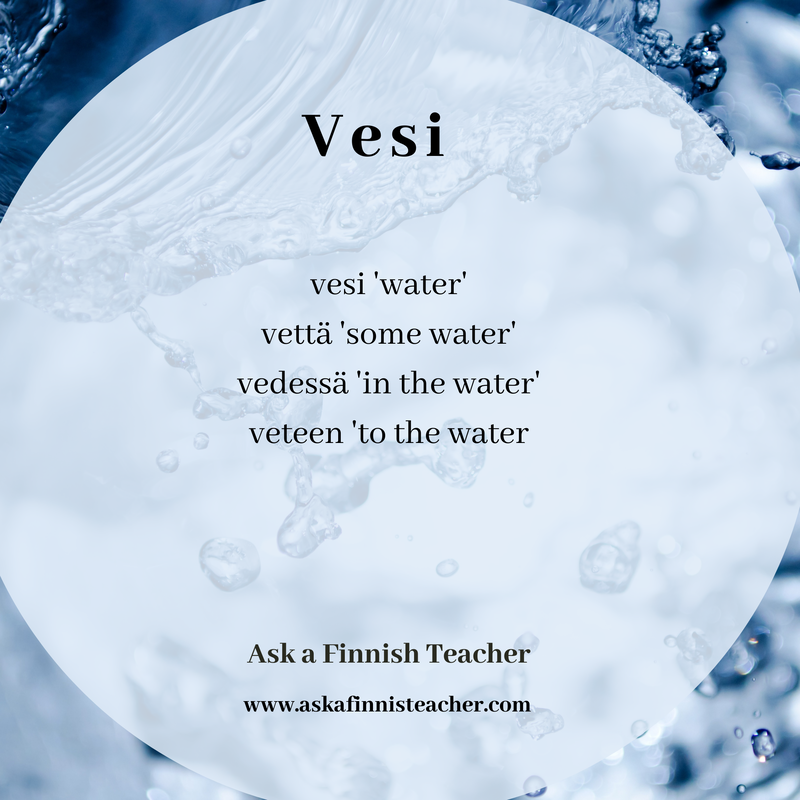|
If you’ve already studied Finnish for some time, you’ll know that Finnish words come in many, many different forms. For example, here’s the word vesi, water:
Vesi on kylmää. The water is cold. Veden lämpötila on 5 astetta. The water’s temperature is 5 degrees. Saisinko vettä? Could I have some water? Sade tulee lumena pohjoisessa Suomessa ja vetenä etelässä. The rain (sade = the precipitation) will fall as snow in the north of Finland and as water in the south. The word vesi has four different stems (or forms that case endings are added to):
Luckily, most Finnish words just have one or two different stems. Some have three, and just a handful of words have four, like vesi here. So when you come across a new Finnish word, how do you know what word it is and what form it’s in? The answer to this is that, unfortunately, you have to look the word up and learn the different forms of the word by heart. A superb tool for this is Kieli.net. Kieli.net is a simple online tool where you can enter any Finnish word in any form and get the perusmuoto (nominative for nouns, A-infinitive for verbs) and all other possible forms of that word as well. As with any online tool, take the results with a grain of salt (I’m looking at you, Google Translate). There are still sometimes mistakes and inaccuracies on Kieli.net, but all in all it’s quite accurate and pretty great overall! Luckily, there are also rules and regular patterns that help you. For example, each and every word ending in nen works the same way:
With words ending in the vowels o, u, ö and y just have two possible forms, the strong kpt version and the weak one
And so forth. As you practice all this and progress in your studies, you’ll find that you’ll start to autimatically recognize all the different forms and be able to use them intuitively. There are also rules and patterns to help you with this, so it’s not all just memorizing word after word! What tools have you used to figure out the different forms of Finnish words? Which ones would you recommend? |
Archives
June 2024
|
Ask a Finnish Teacher / Toiminimi Mari NikonenBUSINESS ID (Y-Tunnus) 2930787-4 VAT NUMBER FI29307874 Kaupintie 11 B 00440 Helsinki If you'd like to send me something in the mail, please email me for my postal address. [email protected] +358 40 554 29 55 Tietosuojaseloste - Privacy policy |
© COPYRIGHT 2015-2022 Mari nikonen. ALL RIGHTS RESERVED.


 RSS Feed
RSS Feed